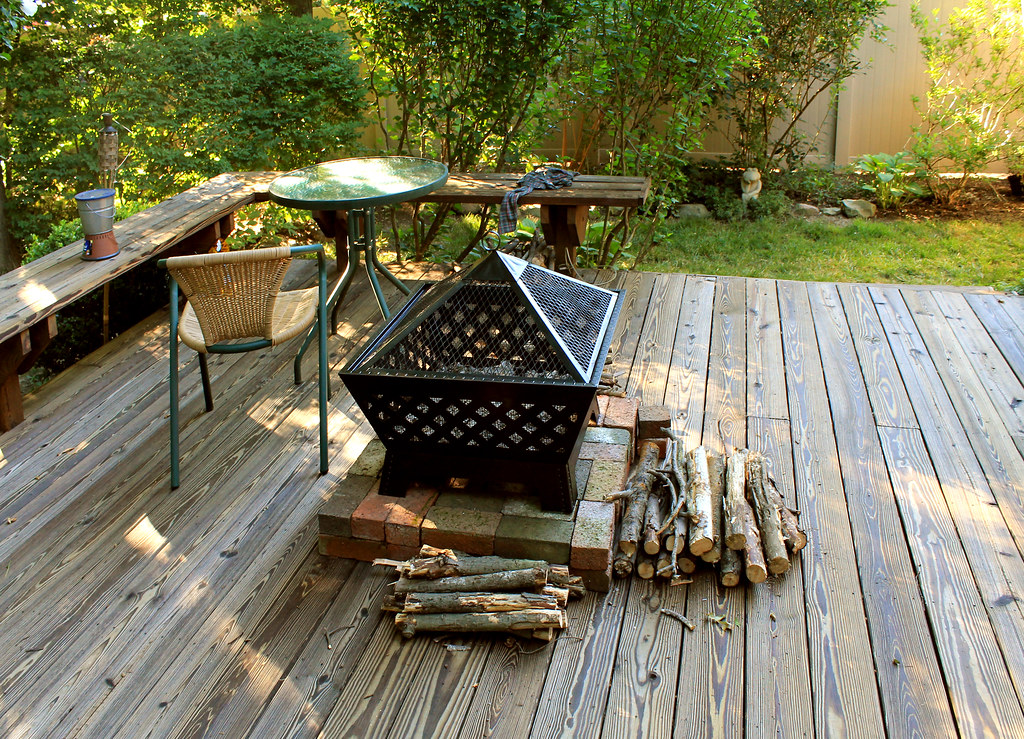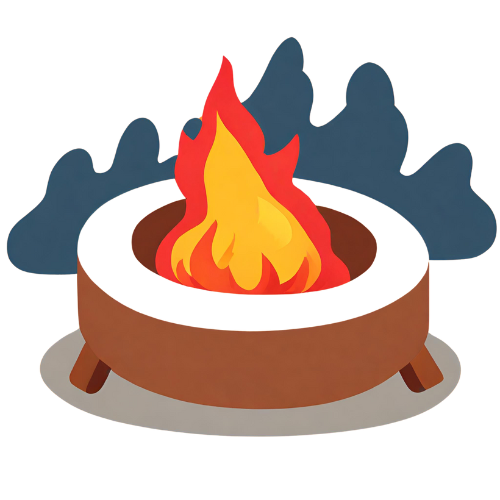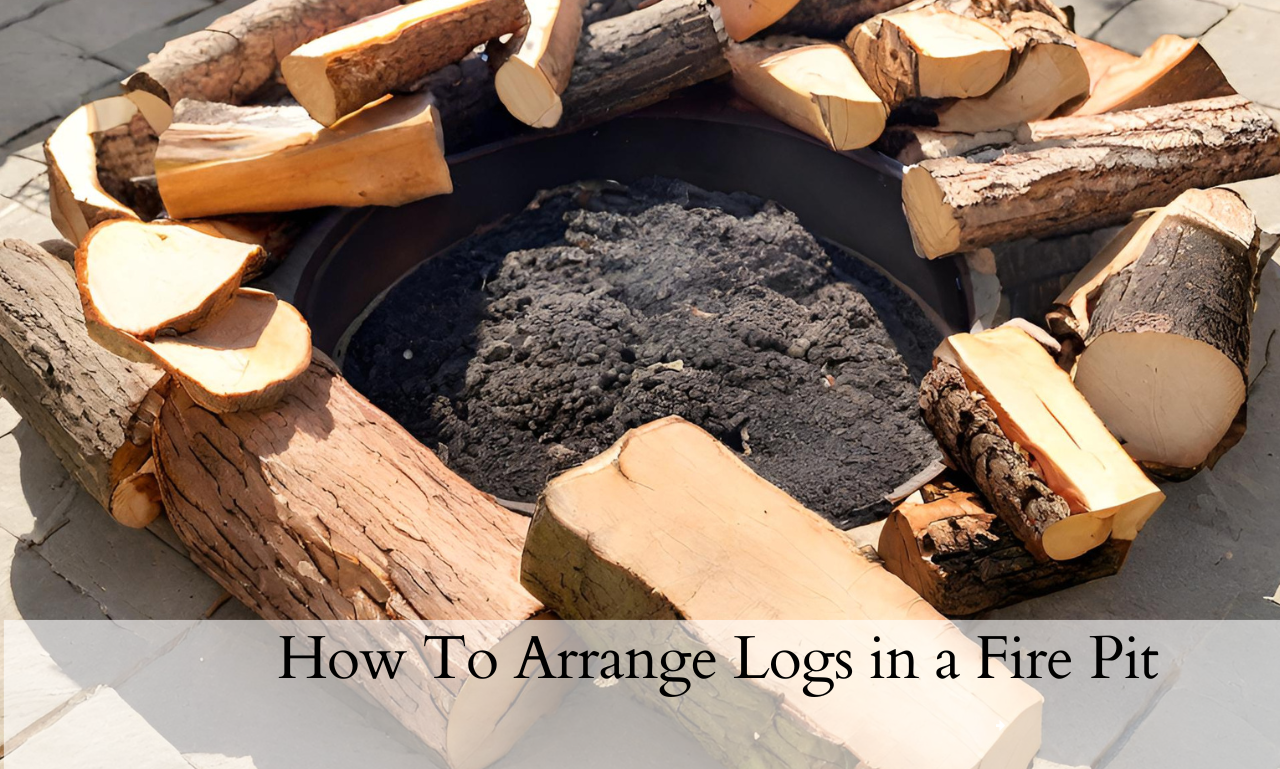Arranging logs in a fire pit effectively is crucial for a good fire. Wondering how to do it right? You’re in the right place!
Logs are essential for fire pits, providing the main source of fuel for the fire. Made from cut wood, logs come in various sizes and types, each affecting how the fire burns. Larger logs burn longer but take more time to catch fire, while smaller ones ignite quickly but burn out faster. The type of wood also influences the fire’s heat output and duration.
This guide is here to help you decide the best way to arrange logs for your fire pit.

Types of Logs for Fire Pits
Selecting the right logs for a fire pit is crucial. Different types of logs have distinct burning properties that affect the fire’s behavior and duration. Understanding these differences helps in choosing the best logs for your specific fire pit needs.
Hardwood Logs
Hardwood logs, like oak and maple, are dense and heavy. They burn slowly and produce a lot of heat, making them ideal for longer, warmer fires. Hardwoods also produce less smoke and fewer sparks compared to softwoods.
Softwood Logs
Softwoods, such as pine and fir, are lighter and less dense. They ignite faster than hardwoods but burn out more quickly. They are suitable for shorter fires or for use as kindling to start the fire.
Seasoned Logs
Seasoned logs are dried out for at least six months. They have low moisture content, which allows them to burn more efficiently and with less smoke.
Kiln-Dried Logs
Kiln-dried logs are artificially dried in a kiln to reduce moisture content quickly. They provide a clean and consistent burn, with a lower risk of producing excess smoke or tar buildup.
Log Arrangement Techniques for Beginner and Expert
Basic log arrangement techniques are crucial for beginners to ensure a safe and efficient fire in their fire pit.
#1 Teepee style
One popular method is the teepee style, where logs are arranged in a cone shape, allowing for good air flow and easy ignition. This method is simple and effective for quick, short-lived fires.
- Arrange larger logs in a circle.
- Lean smaller logs towards the center, forming a cone.
- Place kindling inside the cone.
#2 Log cabin arrangement
Another beginner-friendly technique is the log cabin arrangement. In this method, logs are stacked in an alternating pattern, resembling a cabin. This provides a stable structure and is ideal for longer, more controlled fires.
- Place two larger logs parallel at the bottom.
- Stack two smaller logs perpendicularly on top.
- Continue alternating the pattern.
#3 The lean-to method
The lean-to method involves leaning smaller logs against a larger log. This is great for directing the fire’s heat and is an easy way to start a fire with minimal effort. Each of these techniques offers a different burning experience, suitable for various fire pit sizes and occasions.
- Place a large log as a base.
- Lean smaller logs against it.
- Add kindling under the lean-to.
#4 Upside Down or Pyramid Method
This method allows for a long-lasting fire as the smaller pieces at the top ignite first, gradually burning down to the larger logs.
- Place largest logs at the bottom of the fire pit.
- Layer smaller logs on top, creating a pyramid shape.
- Place kindling and fire starters at the top.
#5 Star or Indian Fire Method
This technique provides control over the fire’s intensity and is ideal for cooking.
- Arrange logs in a star shape with ends meeting in the center.
- Start the fire at the center where the logs meet.
- Adjust the fire’s size by moving logs in or out.
#6 Crosshatch or Grid Method
The crosshatch method produces a hotter fire due to improved air circulation, perfect for warmth and ambiance.
- Stack logs in alternating layers, creating a grid pattern.
- Ensure gaps for air flow between the logs.
- Ignite the fire from the top, allowing it to burn downwards.
Safety Considerations
First, ensure the fire pit is in a clear, open area away from structures and overhanging branches. Use a fire pit screen to contain sparks and embers. Always have a water source or fire extinguisher nearby in case the fire needs to be extinguished quickly.
Avoid using wet or green wood, as it produces excessive smoke and sparks. Ensure the logs used are dry and seasoned for a safer, cleaner burn.
Never leave the fire unattended, and ensure it’s completely out before leaving the area. Stir the ashes to check for remaining heat and douse with water if necessary.
Final Words
Arranging logs in a fire pit effectively ensures a safe, enjoyable fire. Whether using the teepee, log cabin, or lean-to methods, each technique offers unique benefits for different fire experiences. Always prioritize safety, use dry logs, and never leave the fire unattended. Enjoy your fire pit responsibly with these log arrangement tips.

